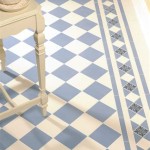How To Make A Patio Floor: A Comprehensive Guide
Creating a patio floor is a significant undertaking that enhances outdoor living spaces. Whether for dining, relaxing, or entertaining, a well-constructed patio floor provides a durable, aesthetically pleasing surface. This article details the necessary steps and considerations for constructing a patio floor, providing a comprehensive guide for achieving a successful outcome.
Planning and Design
The initial phase of any patio floor construction involves careful planning and design. This step is crucial for ensuring the finished product meets the intended purpose and complements the surrounding landscape. Several factors must be considered during this preliminary stage.
Determining Patio Size and Shape: The size of the patio should be proportionate to the available space and the intended use. Consider how many people the patio will typically accommodate and the types of furniture it will hold. The shape can be tailored to the existing landscape and personal preferences. Common shapes include rectangular, square, circular, or irregular designs. Careful consideration should be given to how the patio will integrate with existing structures, such as the house, garden paths, and other landscape features.
Material Selection: The choice of materials significantly impacts the overall appearance, durability, and cost of the patio floor. Common materials include concrete, brick, pavers, natural stone, and gravel. Each material offers unique advantages and disadvantages. Concrete is a versatile and cost-effective option that can be stained or stamped to resemble other materials. Brick offers a classic, timeless look and is relatively easy to install. Pavers are available in a wide range of colors, shapes, and sizes, providing flexibility in design. Natural stone offers a unique, organic aesthetic but can be more expensive and require more intricate installation. Gravel provides a rustic, permeable surface, but may require more frequent maintenance to keep it level and weed-free. The selected material should align with the desired aesthetic, budget, and maintenance requirements.
Drainage Considerations: Proper drainage is essential to prevent water from pooling on the patio surface, which can lead to damage and safety hazards. The patio should be graded away from the house to allow water to flow away naturally. In areas with heavy rainfall, a drainage system, such as a French drain or a surface drain, may be necessary. The slope of the patio should be minimal, typically around 1/4 inch per foot, to ensure adequate drainage without creating an uneven surface. Consulting with a landscape architect or contractor can provide valuable insights into effective drainage solutions for the specific site conditions.
Site Preparation
Proper site preparation is critical for a stable and long-lasting patio floor. This phase involves clearing the area, excavating the soil, and creating a solid base for the chosen material. Neglecting this step can result in settling, cracking, or other structural issues.
Clearing and Excavation: The first step is to remove any existing vegetation, topsoil, and debris from the area. Use a shovel or sod cutter to remove the grass and topsoil. The depth of excavation will depend on the chosen material and the underlying soil conditions. Generally, a depth of 6 to 12 inches is required to accommodate the base material and the patio surface. Ensure the excavation extends beyond the planned patio perimeter to allow for edging or border materials. Use a level and string lines to ensure the excavation is uniform and level. Dispose of the excavated soil properly, following local regulations.
Base Layer Installation: A compacted base layer provides a stable foundation for the patio surface. Crushed stone or gravel is commonly used as a base material. The base layer should be installed in layers, typically 2 to 4 inches thick, and compacted using a plate compactor. Compaction ensures the base material is dense and stable, preventing settling over time. Use a garden hose to lightly dampen the base material before compaction, as this helps the particles bind together. Ensure the base layer is level and sloped slightly away from the house to promote drainage. The thickness of the base layer may need to be increased in areas with poor soil conditions or heavy rainfall.
Sand Bedding Layer: A layer of sand provides a smooth, even surface for the patio material to rest on. This layer should be approximately 1 inch thick and screeded to create a level surface. Use a screed board to drag across the sand, removing excess and filling in low spots. A spirit level should be used to ensure the sand bed is perfectly level. Avoid walking on the sand bed after screeding to prevent disturbing the smooth surface. The sand bed allows for minor adjustments during the installation of the patio material, ensuring a consistent and professional finish.
Installation of Patio Material
The installation of the patio material is the most visible and aesthetically defining step in the process. The specific techniques will vary depending on the chosen material, but certain principles apply regardless of the material used.
Concrete Slab: Pouring a concrete slab requires careful preparation and execution. Forms must be constructed to contain the concrete and define the patio's shape. Reinforcement, such as rebar or wire mesh, should be placed within the forms to enhance the concrete's strength and prevent cracking. The concrete should be mixed to the proper consistency and poured evenly into the forms. Use a concrete vibrator to remove air pockets and ensure the concrete fills the forms completely. After pouring, the concrete should be screeded to create a level surface and then floated to smooth the surface. Once the concrete has partially cured, it can be finished with a broom or trowel to create the desired texture. Curing the concrete properly is essential to prevent cracking and ensure its strength. Keep the concrete moist for several days by covering it with plastic sheeting or spraying it with water.
Brick or Paver Installation: Installing brick or pavers involves laying the individual pieces on top of the prepared sand bed. Start by laying the bricks or pavers along the edges of the patio, using string lines to ensure a straight and even border. Work inward, laying the bricks or pavers in the desired pattern. Use a rubber mallet to gently tap each brick or paver into place, ensuring it is level with the surrounding pieces. Maintain consistent spacing between the bricks or pavers, using spacers if necessary. Once all the bricks or pavers are laid, sweep sand into the joints to fill the gaps and stabilize the patio surface. Compact the sand into the joints using a plate compactor with a protective pad to prevent damage to the bricks or pavers. Add more sand as needed to completely fill the joints. A polymeric sand option can be used to harden the sand and prevent weeds from growing.
Natural Stone Installation: Installing natural stone requires careful selection and placement of each piece. The stones should be arranged to create a visually appealing and structurally sound surface. Begin by placing the largest stones first, using smaller stones to fill in the gaps. Use a rubber mallet to tap each stone into place, ensuring it is level with the surrounding stones. Mortar can be used to secure the stones in place, providing a more permanent and stable surface. Apply mortar to the base of each stone and press it firmly into place. Allow the mortar to cure according to the manufacturer's instructions. Natural stone patios often require more maintenance than other materials, as the stones can shift over time. Regular inspection and maintenance can help prevent problems and prolong the life of the patio.
Finishing Touches
The final stage involves adding finishing touches to enhance the appearance and functionality of the patio. These details can significantly improve the overall aesthetic and usability of the outdoor space.
Edging and Borders: Edging and borders provide a clean, finished look to the patio and help to contain the material within the designated area. Common edging materials include brick, stone, wood, or metal. The edging should be installed along the perimeter of the patio, ensuring it is level with the patio surface. Edging can be set in mortar or secured with stakes, depending on the material and the desired level of permanence. Borders can be used to create decorative patterns or to define different sections of the patio. A well-designed edging or border can significantly enhance the visual appeal of the patio.
Sealing and Protection: Sealing the patio surface can protect it from stains, water damage, and fading. Concrete and natural stone are particularly susceptible to damage from the elements and should be sealed regularly. Use a high-quality sealant that is specifically designed for the chosen material. Apply the sealant according to the manufacturer's instructions, ensuring the patio surface is clean and dry before application. Sealing can also enhance the color and texture of the patio material. Reapply the sealant every few years to maintain its protective properties.
Landscaping and Furniture: Completing the patio involves adding landscaping and furniture to create a comfortable and inviting outdoor space. Plants can be used to soften the edges of the patio and create a connection to the surrounding landscape. Choose plants that are appropriate for the climate and the amount of sunlight the patio receives. Furniture should be selected to complement the style of the patio and provide comfortable seating and dining options. Consider adding outdoor lighting to extend the usability of the patio into the evening hours. With careful planning and execution, the patio will become an enjoyable and functional extension of the home.

How To Build A Patio An Easy Do It Yourself Project

11 Fantastic Patio Flooring Ideas To Transform Your Home

Pin On Outdoor Patio

How To Build A Paver Patio Young House Love

How To Build A Backyard Paver Patio All By Yourself Youtube

How To Build A Low Profile Deck Patio Part 1 Of 2

11 Fantastic Patio Flooring Ideas To Transform Your Home

How To Make A Concrete Patio Bigger

Resurfacing A Concrete Patio For Budget Diy Makeover Fab Everyday

How To Create A Beautiful Wood Tile Patio Deck On Budget Do It Yourself Fun Ideas







